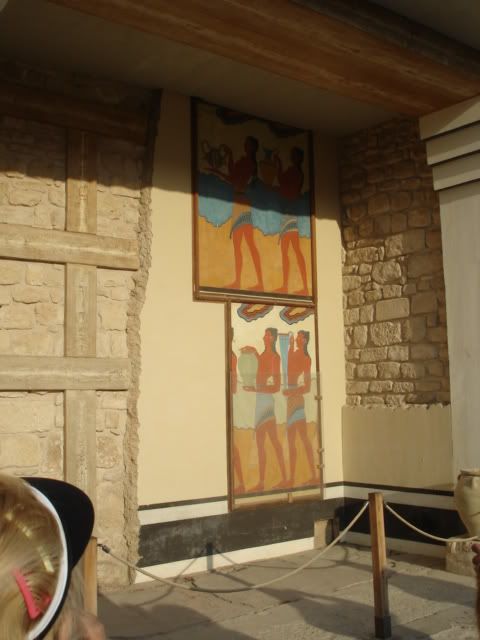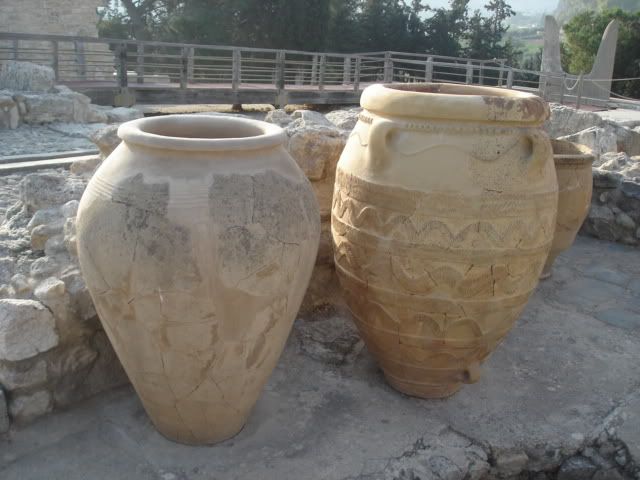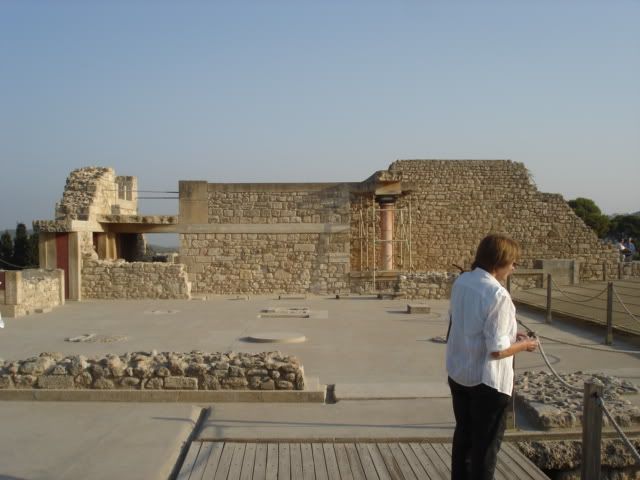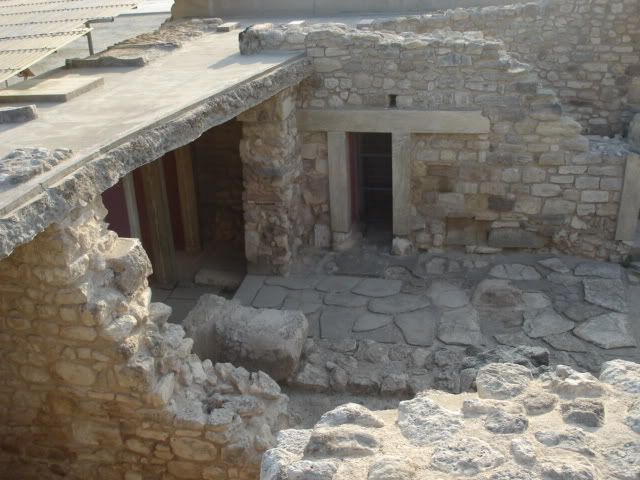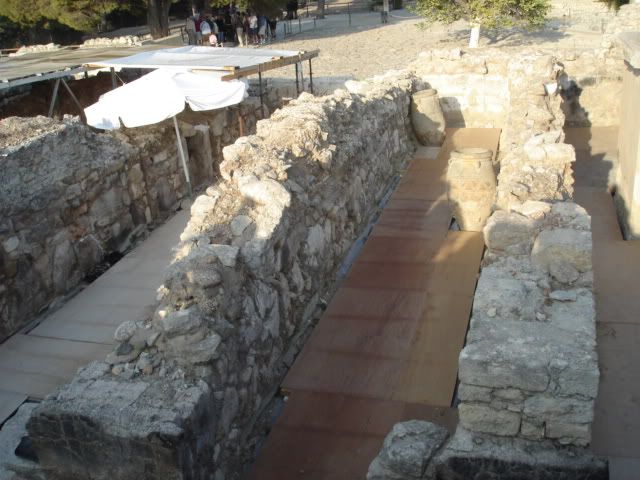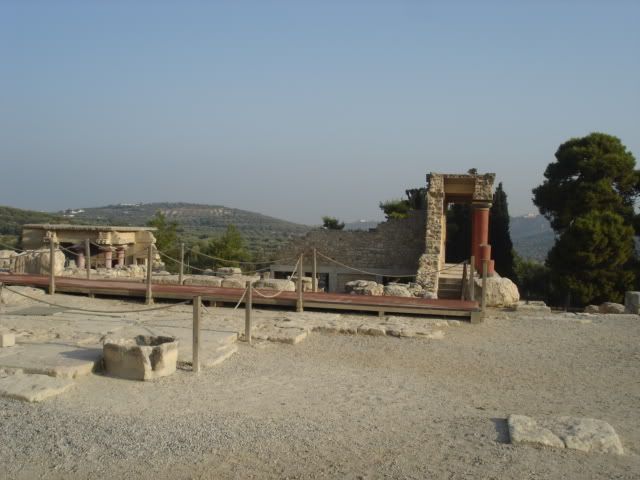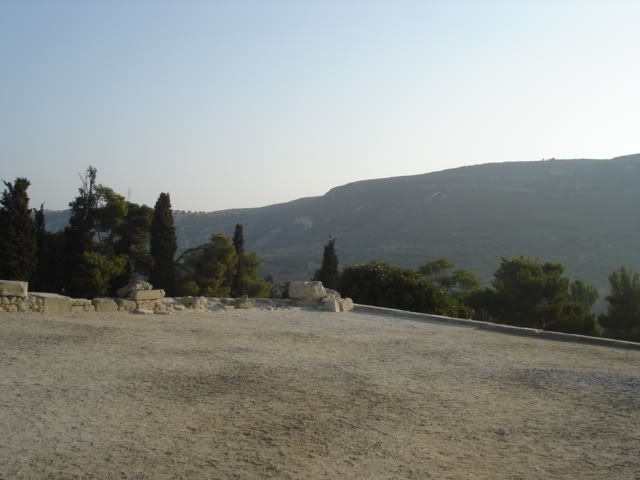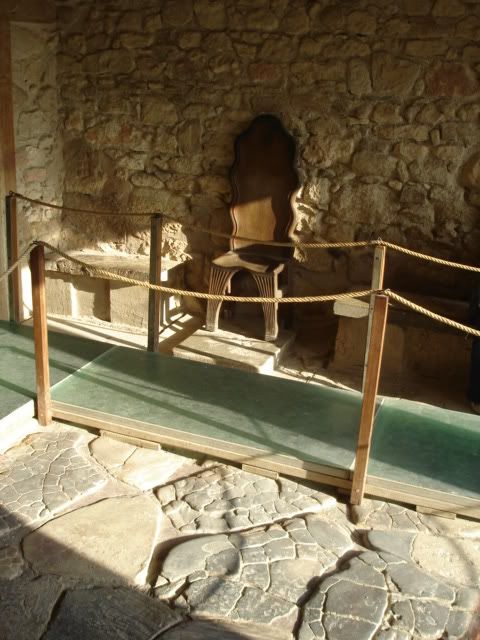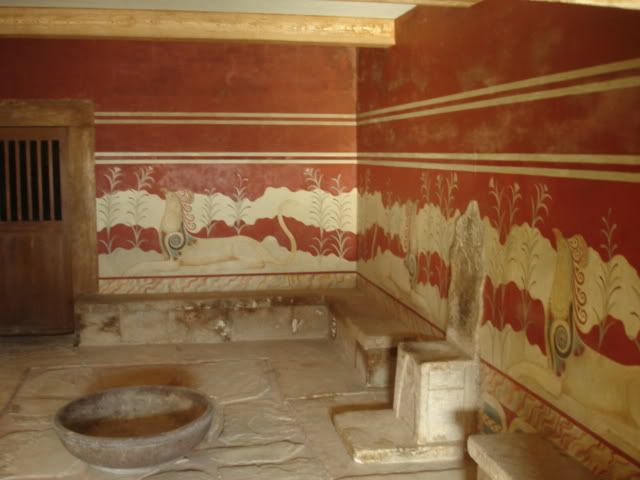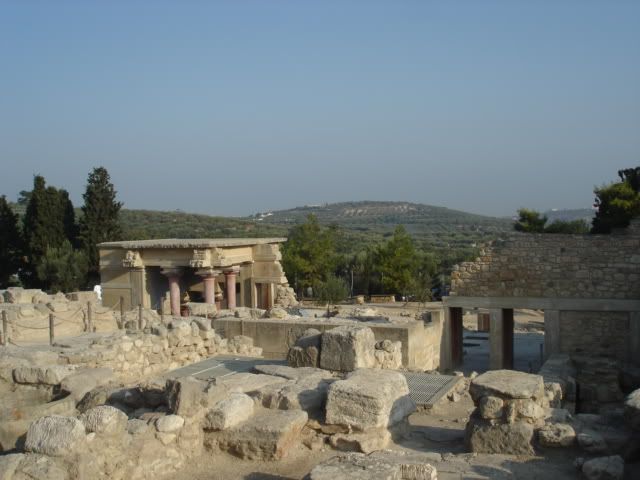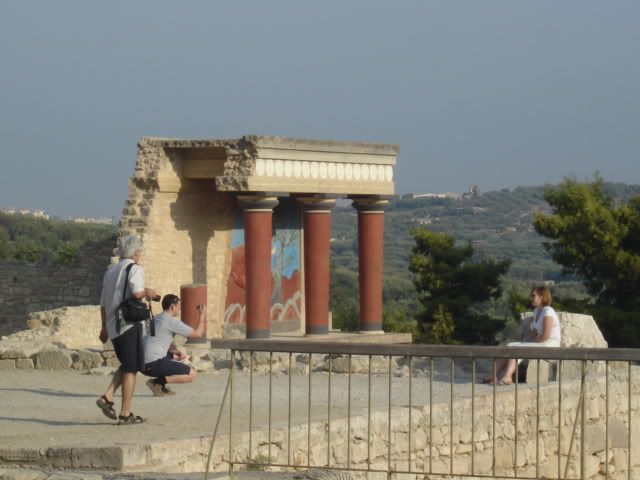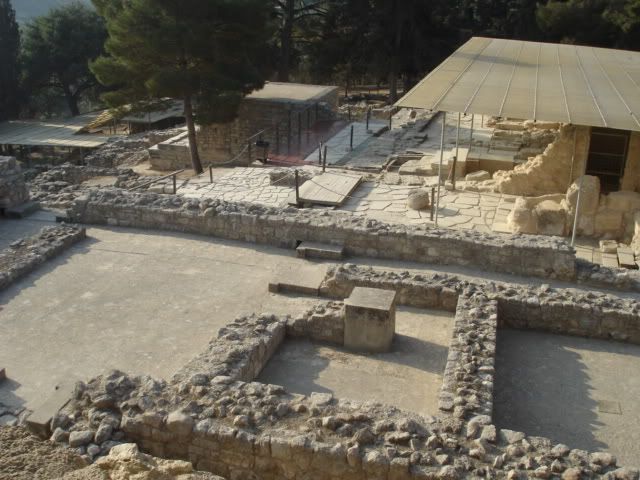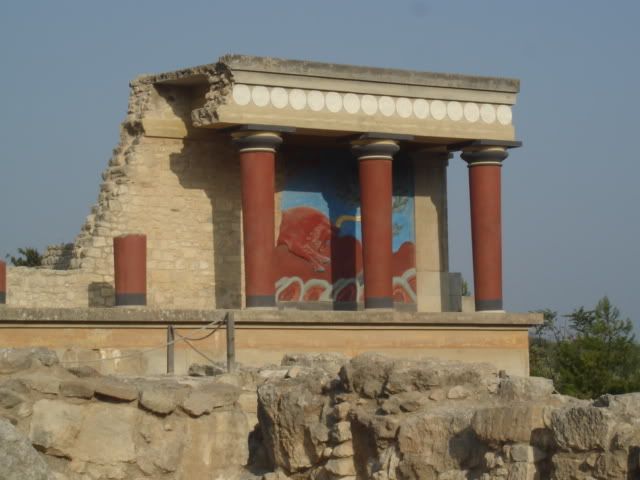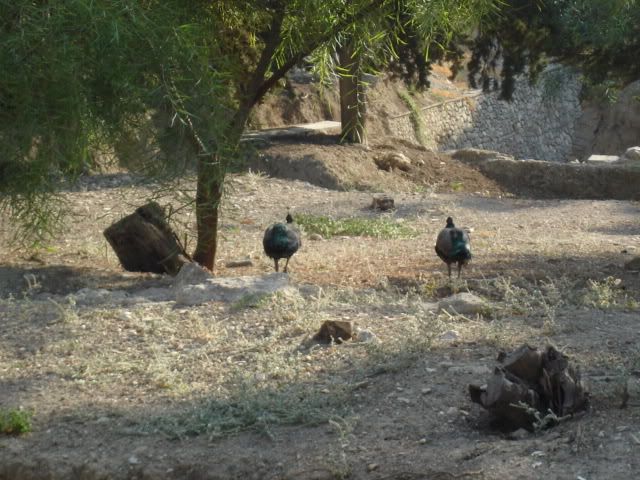
Bright and early the next morning, after a rush hour bus ride through the city of Irakleion we arrived at Crete’s most famous landmark...6 Euros is about 10 bucks, now, as the dollar is basically worth a fart in a hurricane at this point.

Long view of the site. What Sir Arthur Evans found were mainly the low walls and everything higher than that were his own reconstructions. Unlike what had been done at Ephesus Sir Arthur used modern concrete to reconstruct what the buildings would have looked like. This has apparently fallen afoul of modern archaeological theory but it must be remembered that Evans was working in the 1920's when a lot of these rules did not exist. In any case, keep in mind that you are seeing is Evans’ opinion of how things would have looked....although he did have the original frescos to give him an idea. The frescoes have been removed to museums for preservation but several were replicated and are included in the photo essay below. Enjoy, mes amis.

A sample of the low walls. Because the palace was built in at least three storeys, some of the rooms underneath were better preserved than the upper floors. Storerooms, including one that suffered a terrible fire, were visible below.

A sample of a restored Minoan walkway.

From the entry plaza, shooting down to another section which Evans restored. Evans did make an effort to re-cycle some of the stone but the modern concrete is clearly visible. Part of the reason for the sprawling, almost haphazard, building plan is that a great many of the rooms were lit by sky lights and it was necessary to arrange things to make the maximum advantage of the sun. It’s pretty easy to see how the idea of the labyrinth came about. To primitive Greeks in the middle of the second millenium bringing them to Knossos would have been the modern equivalent of dropping a New Guinea tribesman in Times Square.

If I didn’t mention how spectacular the view was this picture will give some idea. It’s Good To Be The King.
